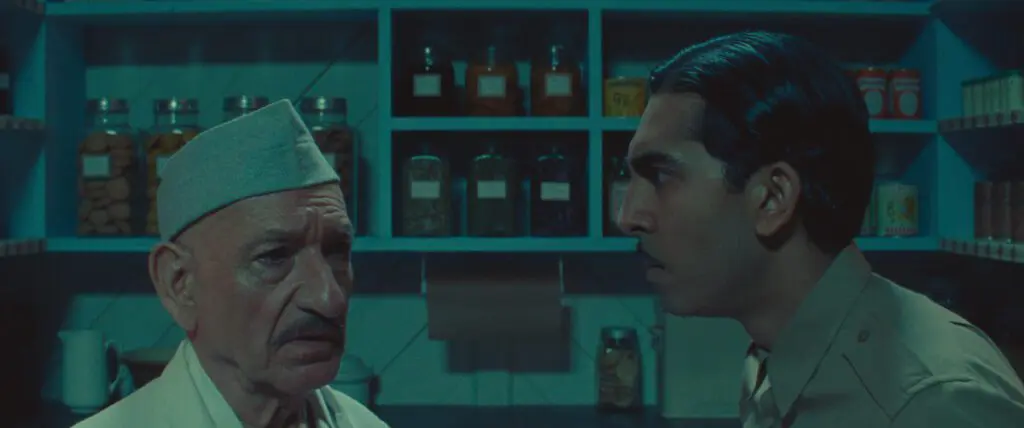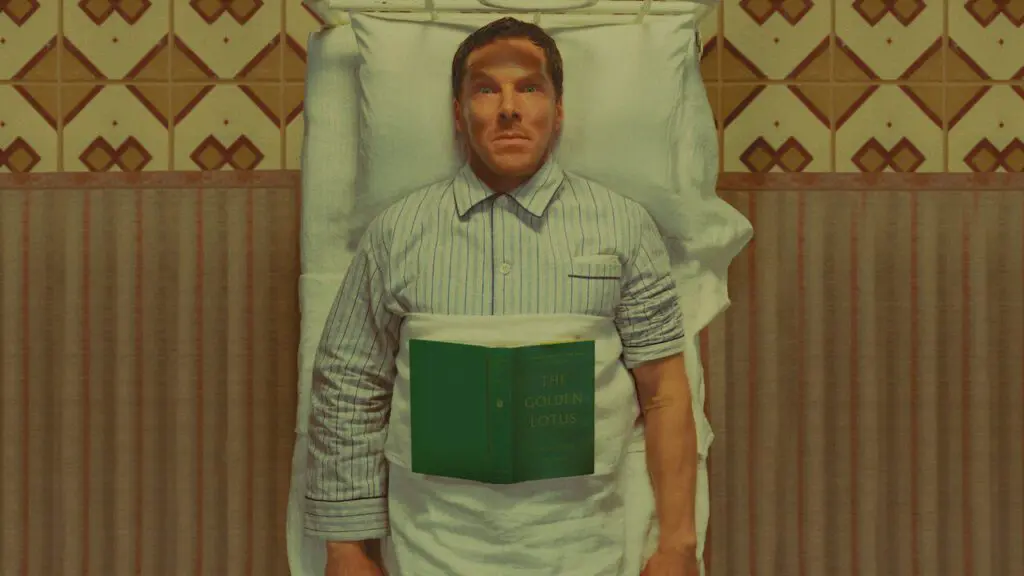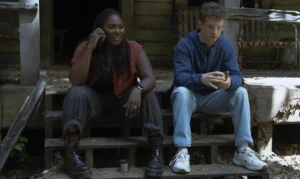Poison is the fourth and final short film directed by Wes Anderson for Netflix, each adapting one of Roald Dahl’s lesser-known short stories from a back catalog that the streamer paid a fortune for. It’s also by far the most simple. It doesn’t have much deliberate ambiguity or mystery, there are few flourishes in the way the story is told, and the ending of Poison doesn’t even need much unpacking.
We’re going to do so anyway, of course, with major spoilers if you’re concerned about such things, but partly, the obviousness is the entire point. You’re supposed to get it straight away, because when you do the title slots neatly into place. This isn’t so much a story about a snake as it is a story about venom, which isn’t quite the same thing.
The premise of Poison is as simple as its eventual outcome. In it, Cumberbatch plays Harry Pope, a man who wakes up with the belief that, belief the open book laid across his abdomen, there is a venomous snake called a krait just waiting to fatally sink its fangs into him.
Mr. Woods (Dev Patel) summons the help of Dr. Ganderbai (Ben Kingsley) to safely remove the snake from Harry, or perhaps even the other way around. He eventually comes up with the idea of gassing the snake unconscious using chloroform.

Image from Poison (Credit – Netflix)
Was there really a snake?
At no point during the short is it ever confirmed if there really is a snake under the book. The only time the audience sees one is in Gipsy House, safely contained in a jar sitting beside Dahl himself. Even after the book is removed, there is no snake beneath it, and it’s deliberately unclear whether it was ever there in the first place.
In the confusion, Dr. Ganderbai makes a friendly joke about perhaps the snake never having been there, which leads to the real twist of the piece.
In the aftermath of being ostensibly saved by Dr. Ganderbai, Harry takes his joke exceptionally poorly and uses it as an excuse to launch a vicious tirade of racist abuse at the doctor.
This is where the meaning of the short’s title becomes very clear. “Poison” doesn’t refer to the snake at all, but to Harry, and to the toxicity of his reflexive bigotry. The first time we hear him speak above a whisper is to racially abuse the man who may have just saved his life for having the temerity to make light of the situation.
It may be uncomplicated, but it’s a witheringly sharp twist, showing how the true venom is the kind human beings have for one another, often for no reason at all.
Read More:




